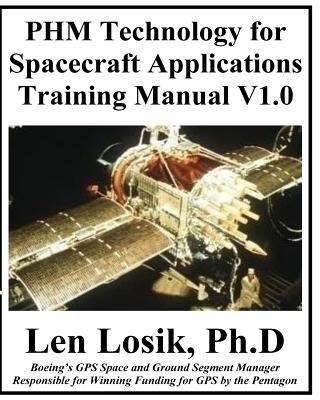You are here
Back to topPHM Technology For Spacecraft Applications Training Manual V1.0 (Paperback)
$179.95
Usually Ships in 1-5 Days
Description
PHM Technology for Spacecraft Applications Training Manual V1.0 provides a training resource for PHM technology in Power Point slide format that describes the author's experience and results in developing and using PHM technology on the 12 Air Force's Block I GPS satellites the author used to win funding by the DoD for the GPS program, while in competition with two existing Navy, satellite-based navigation programs in place and fully funded. PHM Technology for Spacecraft Applications Training Manual V1.0 includes the information necessary to train engineers conceptually in a proactive, preventive paradigm for producing spacecraft with a design and test program that will provide spacecraft with 100% reliability, impossible when using probability reliability analysis, which make 100% reliability unachievable at any cost. The author includes his 30 years experience developing and using PHM technology and predictive algorithms to predict spacecraft equipment failures with 100% certainty. PHM Technology for Spacecraft Applications Training Manual V1.0 includes the information necessary in a seminar slide format to convince engineers and management personnel that spacecraft with 100% reliability is possible and using PHM technology will stop the catastrophic spacecraft failures that have plagued the space industry since its beginning in 1957.
About the Author
The author is an award winning spacecraft designer from Boeing and the U.S. the Air Force for his technical contributions that won funding of the GPS program by the DoD as the Boeing GPS Space & Ground Segment Manager. The authored pioneered predictive algorithms on GPS satellites to identify the premature aging in satellite subsystem and payload equipment analog telemetry and determine remaining usable life as the Boeing/Air Force's GPS Space and Ground Segment Manager at the GPS satellite factory, launch pad and on on-orbit and on the General Dynamics Atlas E/F launch vehicles used to launch GPS satellites beginning in 1979. The results of his prognostic analysis improved the design of the following contract award for 40 Block 2 and 2A satellites. After using predictive algorithms on GPS satellites, the author researched the source of the data that illustrated the presence of premature aging in telemetry on NASA, military and commercial satellites, missiles and launch vehicles to predict spacecraft equipment failures with 100% certainty. The author published his first paper on his 2 year prognostic analysis on the NASA EUVE satellite at the International Telemetry Conference in 1996 and 1997 and the 1997 AIAA Small Satellite Conference and he published the results of his 26 years of research into the source of the information he used to predict equipment failures in 2 books and over 25 technical papers. As the NASA GOES Next satellite Spacecraft Manager, he was responsible for the design, manufacture and test of 10 $300M NASA GOES Next geostationary weather satellites and he completed a prognostic analysis only on the first GOES Next I (GOES 8) spacecraft. Five of the last of the ten $300M GOES Next Satellites were taken away and rebid for poor reliability in 1997 due to the author's discovery that at least 10% of the satellite subsystem equipment had not been tested causing a series of premature failures that effected the following five $300M GOES Next satellites. The author was also the United Technologies Titan 34D, Boeing IUS solid rocket motor Test Manager and used a prognostic analysis in the review of the test data from these systems after manufacturing. As the Program Manager on the NASA EUVE satellite at U.C. Berkeley, the author completed a prognostic analysis on 3 years of on-orbit telemetry in 1994 and 1995. The results were published with Lockheed Martin's reliability engineers for use on the U.S. Navy Trident D5 ICBMs.
